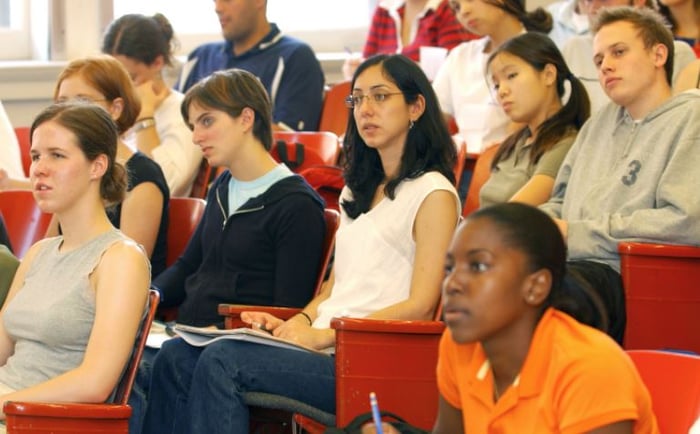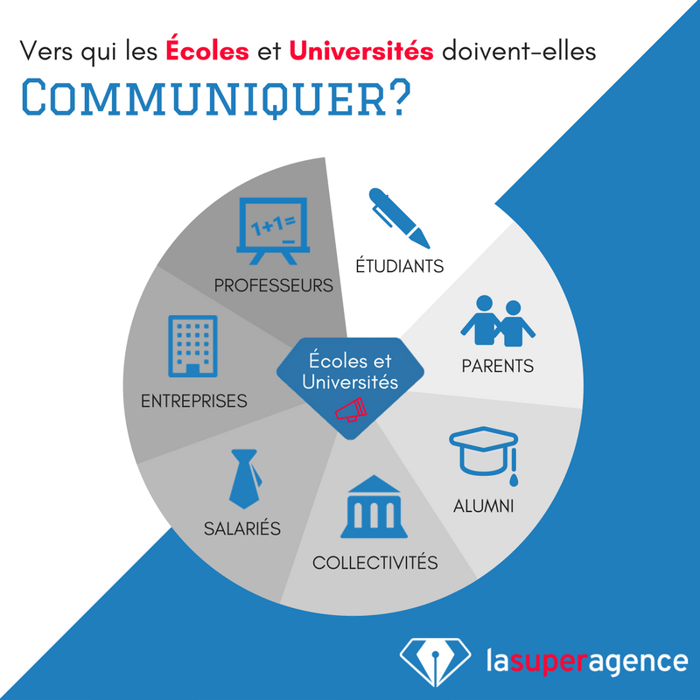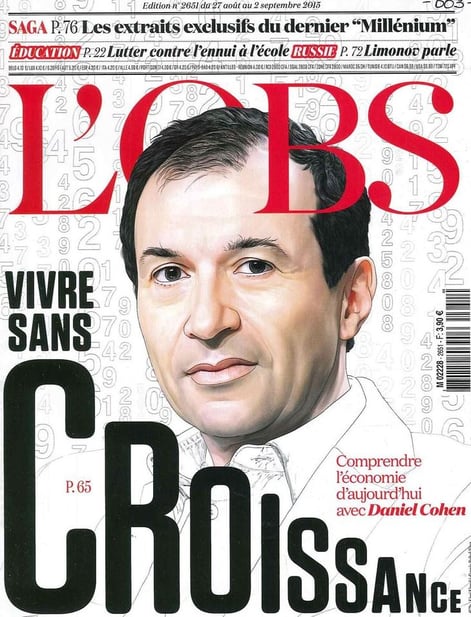« Communication is about understanding the listener " (Jean-Pierre Abraham).
If you deal with the communication strategy of a large school or university, this question is surely at the forefront of your mind when it comes to publishing content: who is it for?
To prospective students?
To professionals who want to do an MBA or additional graduate training?
To the companies that will take your students on professionalization contracts?To the teachers you want to bring in?
To communities? To the state? The list is long ...Digitization has brought about strong changes in the communication of schools and universities.
Placed at the heart of a globalized education system, constantly improving their attractiveness is a decisive issue for their development.

Higher education institutions are competing fiercely. Some, like the University of Paris-Saclay, decide to form groups on a global scale, developing massive communication.
In such a context, far too conventional communication can quickly become ineffective.
Other than competition, the main difficulty in communicating well for a school or university comes from the multiple targets, as discussed above.
One of the possible solutions is to build a real strategy of acquisition, conversion and targeted emailings: this is called Inbound Marketing.
Communiquer, c'est savoir viser, déterminer ses cibles.
Any communication strategy starts with segmenting your audience based on different expectations.
This first phase of Inbound Marketing is called defining buyer personas.

Here is a non-exhaustive list of your different targets :
- The students. Whether they come from the baccalaureate, preparatory classes, or parallel admission, they are the main target (numerically) of schools and universities.
- There may be sub-divisions within this segment such as international students to whom you need to brand, describe the course and its outreach, etc. In English, of course.
- The parents who have expectations of rigor and seriousness about training. Even if they are not the primary decision-makers, they influence the choice and are often the " payers "
- The alumni, who are influencers of the school brand with their employers and colleagues. They take a close interest in "alumni" news, are on closed loops (Facebook, Linkedin, Telegram) and follow the annual results of their school's ranking.
- Some employees who are interested in continuing education and want to obtain a degree such as an MBA.
- The companies that are approached for recruitment forums and offer internships or apprenticeship contracts to students.
- The faculty. To provide quality training, institutions have a duty to be attractive to the best teachers. Specific content can therefore be directed to them.
- The local government, or even the state. Some schools are dependent on government funding. Adopting a content strategy for them can make sense.
To address these different targets, there are a lot of channels your website in general, social networks, email campaigns, professional networks, student and/or trade shows, etc. So many possibilities that can make your head spin!
Eloquent communication or inaudible soliloquy?
Once you've been able to identify your various targets, Inbound Marketing allows you to set up the virtuous circle of attractiveness.
For example, if you have expert teachers who are recognized in their field, they will be able to produce original content that will appeal to students in such a way that you will have increased visibility.
For the moment, most schools only communicate on the notoriety of these professors, such as the’ ENS Ulm, which can congratulate itself on having the economic expert Daniel Cohen on its staff. When he makes the cover of the Obs, he ensures the recognition of the institution.

In addition, some schools and higher education universities are deciding to join forces to communicate together as evidenced by the gathering of ten grandes écoles (including Polytechnique and HEC), two universities (Orsay and Versailles St Quentin), and six research organizations within the greater Paris Saclay University.
Dominique Célier (director of communications for the consortium) says on this subject " Within the framework of our group as well as that of Paris Saclay, we defend innovation and enterprise in a digital context everywhere. Tomorrow it will be this ensemble and positioning that will define our global visibility "
In the face of these powerful clusters, institutions that remain on their own risk having their communication ignored, much to their peril.
Inbound marketing as a solution to tune your violins
The tricky exercise of communication also lies in the complexity of attracting from among the best students those who will thrive the most in your school, and then act as communication relays (alumni).
Anthony Poncier (associate director of Publicis Consultants) says "Accustomed in press relations to controlling the timeline and proofreading the information released, the communications director today must be able to let go and rethink the role of communications "
To rethink this role it seems you have everything to gain by implementing some inbound marketing tips.
First of all, because this approach goes the furthest in terms of determining targets (the buyer personas mentioned above). Thanks to this preliminary work, you'll know precisely who your content is aimed at and in what context to deliver it.
Then, Inbound Marketing invites you to " nurture " your students and teachers, thanks to social networks and automated emails (Marketing Automation).
The director of communications at ESSEC, Raphaël Muller says that " We must encourage professors as well as students to invest in social networks and to be active and attractive " "DirComof the Mines de Nantes : " nothing beats students talking to other students ".
Finally, by providing your student-prospects (and other targets) with premium content-oriented sites, you will enhance your reputation and demonstrate your expertise more reliably than with "advertisement" type communication.
Be your own media
The art of communication rests first on an art of segmentation. Sometimes in order to have an echo certain French schools and universities prefer to join forces and thus make a single voice resound.
In a digitalized world, Marketing and its Inbound approach can amplify your communication campaigns and allow you to generate a strong appeal, by being your own media.








